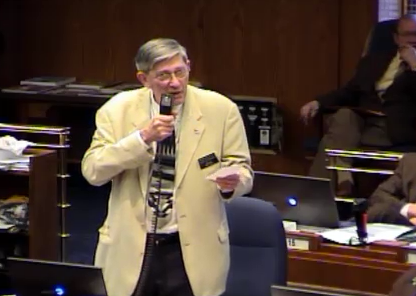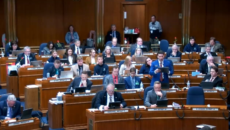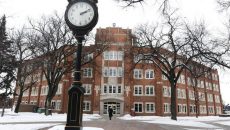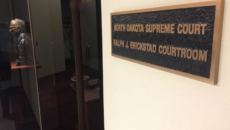House Approves Amendments Paring Down Higher Ed Budget Growth

Earlier this week I posted about a dog fight pending in the House over amendments cutting down Governor Jack Dalrymple’s massive 38.7% budget increase. The reduction in higher ed spending the amendments mandate really doesn’t amount to much of a decrease. Higher education is still getting a windfall:

But even a small reduction in the growth in the higher ed budget was enough to set off histrionics from Democrats. On Twitter, Grand Forks Democrat Kylie Oversen said today wasn’t a “good day for higher education.”

A 32% increase in higher ed funding, after the House cut out about $47 million mostly by changing the rates for Governor Jack Dalrymple’s per-credit funding model to a lower level, is still a pretty damn good day for higher education. But I’m sure all the higher ed apologists, including those in the media, will be carrying on about a “cut” in higher ed funding.
But as you can see from the graph above, there’s no cut.
Most of the debate on the House floor circled around the moving of funding for a new building at UND’s medical school from an independent appropriation into a master plan funding model. Rather than funding the medical school directly, the House is calling for the university system’s capital projects to be funded out of a set pool of money. This makes more sense as it allows the legislature to control costs, and forces the university system (which is doing far too much campus expansion, frankly) to prioritize some of these projects.
Rep. Glassheim argued that the $53 million for the medical school would just be added to the pull of master plan funding anyway. “There’s plenty of money available,” he said, “and I know where it is.”
Rep. Al Carlson wasn’t so sure. “When you say we’re flush with cash when you jump this [state] budget to $13 billion, it’s just not true.”
I’d like to call this a victory. Certainly even wrestling out this much of a budget reduction out of the higher ed budgets is an accomplishment given how politically powerful the universities are, and how in-the-tank the media is for higher ed in general, but let’s be honest. America, and North Dakota, has a problem with a higher education bubble.
We’re on track to make the bubble in North Dakota more than 32% larger. But hey, at least it’s not 37% larger. That’s something, I guess.
But keep this graphic in mind, showing higher education spending growth over enrollment growth. Spending is growing several times faster than enrollment. In a time where technology is supposed to be making education cheaper and more efficient, where in the world is all this extra money going?








